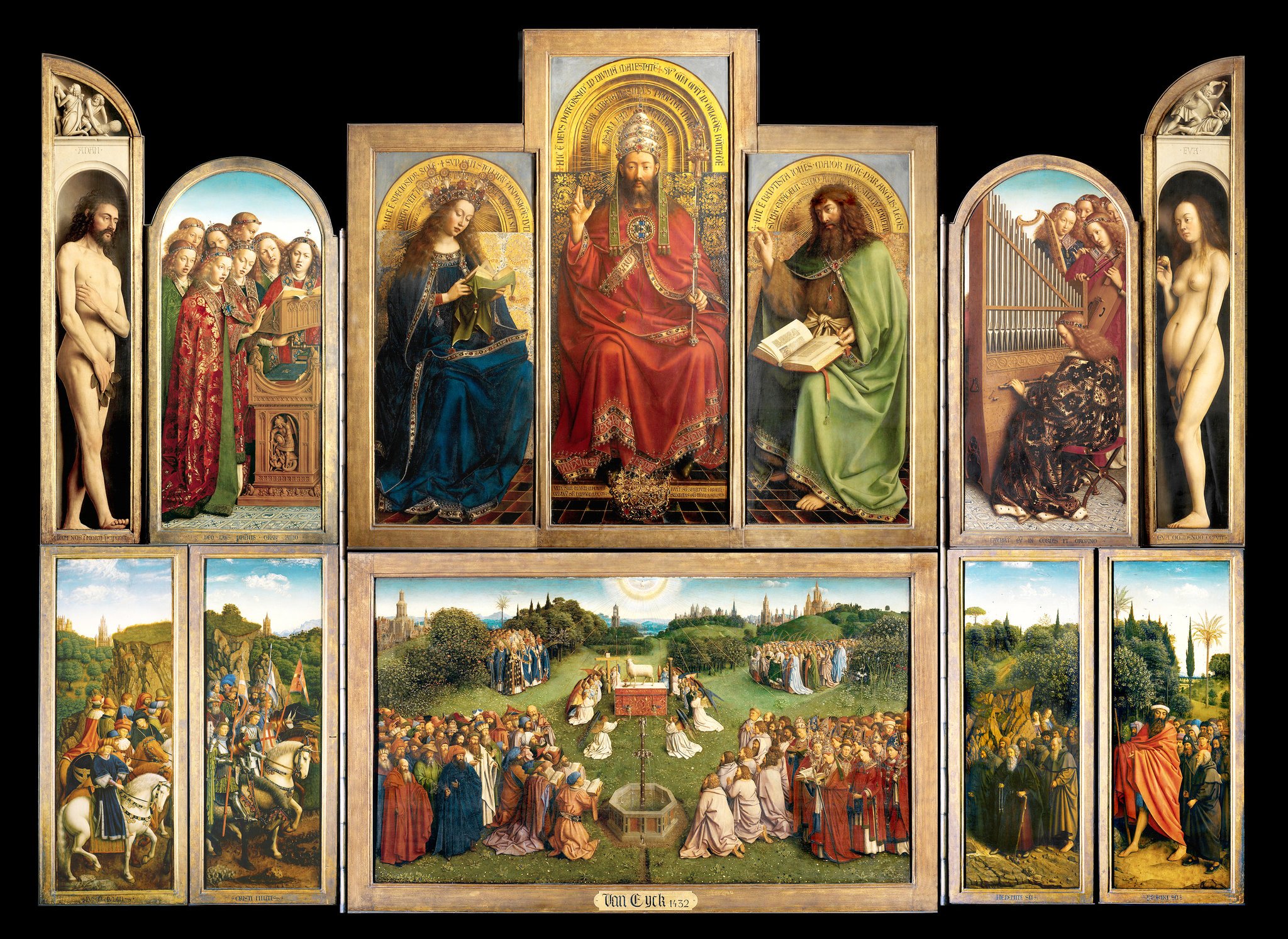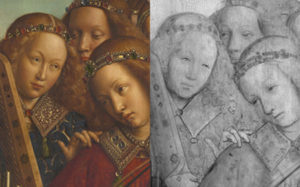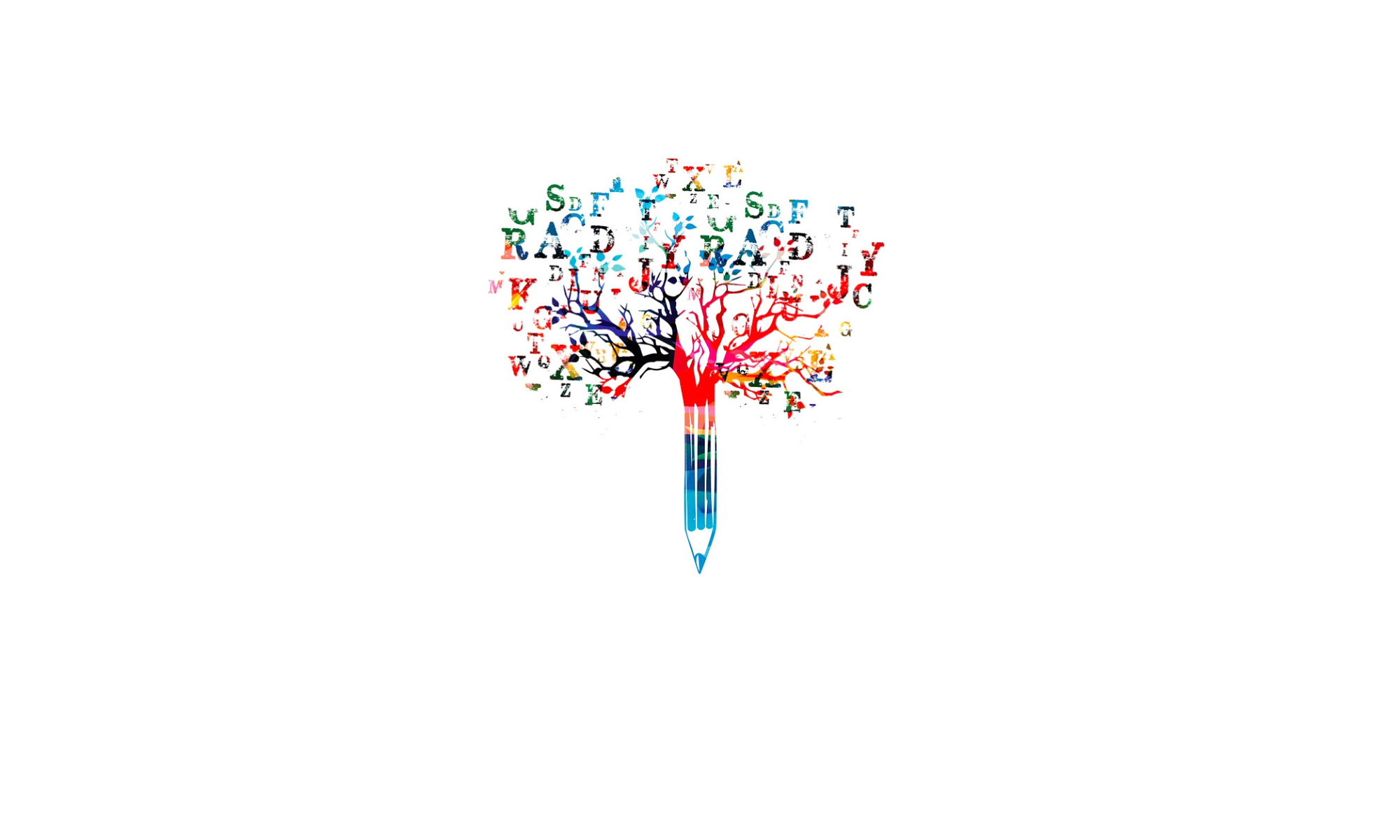What’s nicer than being given a poem for Christmas? Or a painting? Well, in this spirit, I am passing on to you a wealth of presents: two poems and two paintings that are just the perfect gifts for this time of year! The paintings are the Ghent Altarpiece (Adoration of the Lamb) by the Van Eyck brothers and Pieter Brueghel’s Adoration of the Kings. The poems based on these paintings are by Linda Paston and William Carlos Williams and take a very contemporary – perhaps even ‘alternative’ – look at the nativity scenes depicted in the two paintings. (If you would like to compare these with more traditional versions of the scene, listen to the lyrics of any of the Victorian carols that we still sing today).
- The first poem (by Linda Paston), is based on ‘The Ghent Altarpiece ‘, a polyptych (multi-panel) painted by Hubert and Jan Van Eyck in the 15th century. Considered one of the masterpieces of European art, the panels are organised in two vertical segments, each with wings that have been painted both inside and outside. The main panel contains the image of Christ, the Virgin Mary, and John the Baptist and these are flanked, in the adjoining panels, by angels playing musical instruments. On the far outermost panels, are the figures of Adam and Eve and the four lower panels are divided into two pairs featuring John the Baptist and John the Evangelist. The two outer panels contain the portraits of the donors (often the custom) and, for the rest, we find a rather crowded mix of saints, sinner, soldiers, and clergy (see image below):

Such a complex and beautiful work of art offers a wealth of material for a poet. Perspective, for example, would be endless: one could write about the entire work or only one part of it, focus on certain figures and ignore others, refer only slightly to the painting, while focussing on the Van Eyck brothers or other more ‘associative’ concerns, consider the painting in the context of all other similar works … and much more.
One poet’s view of the Ghent Altarpiece examines only a small corner of the masterpiece – a detail from the altarpiece titled ‘Angels Making Music’ – and yet manages to capture the very making of it and the human stories that could lie behind this and other great works of art as well.

Linda Paston’s poem, titled, appropriately, ‘Detail of the Altarpiece at Ghent’, offers a fascinating contemporary take on this early masterpiece, viewed not in situ, but as an image on an ordinary postcard, probably sent to her by a friend on her travels through Europe. This ordinary print – a relic of modern tourism – inspires Paston to reflect not on the significance or beauty of the altarpiece, but on the everyday world of girlhood and on the real girls who posed for the masters.
‘Detail of the Altarpiece at Ghent’
The angels
in the corner
crowd this postcard
ready to fly
wherever the mails
might take them.
They have the scrubbed faces
and the gauzy hair
of my daughter’s friends
in high school chorus,
their cupped mouths
brimming with hallelujas
wrapped in the reds
and golds of cherubim.
Those rough girls, too,
dreamed about boys
and when Van Eyck was done
grew up and married them
and died. Today I pin
their picture to my wall
where the bronze notes
of the sun’s great harp
can strike them
back to song.
[from Carnival Evening: New and Selected Poems (W.W. Norton), 1998]

All of the individuals in this painting are treated as commonplace – from king to peasant. Notice, for example, that the Three Kings are not majestic by any standard, but seem to be caricatures of themselves, their clothing almost comical. The Virgin is not idealised and she is not beautiful; Notably, we see common footsoldiers at the scene (which may reflect the Spanish occupation of the Netherlands at this time). One of the peasantry is seen gossiping into the ear of Joseph, who leans back to listen with interest (a possible reference to the controversy surrounding the virgin birth). All in all – not what one expects to find on a Christmas card. But, although it may appear to be irreverent, it is still very much a religious painting. The Virgin’s place in the sacred event is emphasised by the halo created by Joseph’s hat and above her head, we see a cross formed by the soldier’s spear. Finally, notice that Mary and the baby are placed at the very center of this crowded scene – at the heart of the Christmas story.

William Carlos Williams’ poem ‘The Adoration of the Kings’ wonderfully mirrors Brueghel’s focus on the commonplace, his departure from Italian Renaissance tradition, and yet the focus on the Virgin as both the sacred and human center of the whole.
‘The Adoration of the Kings’
From the Nativity
which I have already celebrated
the Babe in its Mother’s arms
the Wise Men in their stolen
splendor
and Joseph and the soldiery
attendant
with their incredulous faces
make a scene copied we’ll say
from the Italian masters
but with a difference
the mastery
of the painting
and the mind the resourceful mind
that governed the whole
the alert mind dissatisfied with
what it is asked to
and cannot do
accepted the story and painted
it in the brilliant
colors of the chronicler
the downcast eyes of the Virgin
as a work of art
for profound worship
[from Pictures from Brueghel(New Directions), 1967]
Williams wrote a much longer poem on this same picture, titled ‘Breughel’s Nativity’ (1958) and it was later published in Paterson, Book 4. It’s not quite as reverent as the Christmas cards that I normally send, so I chose the later poem. But if you would like to read it (and I recommend this wholeheartedly), see the following website: wcwbrueghelpoetry.blogspot.com
What’s interesting about this earlier poem is that it takes an honest look at the slovenliness of the shepherds, the plainly-attractive Mary, (who is ‘a girl/and a pretty girl at that’), Joseph as a cuckolded old man, and many more references to the down-to-earth humanity of the scene. Yet as irreverent as it seems to be, Williams – as Brueghel – still places the baby in most important place in the canvas: as its ‘tiny human center’.
MERRY CHRISTMAS! HAPPY NEW YEAR!
See you again in the second week of January!
